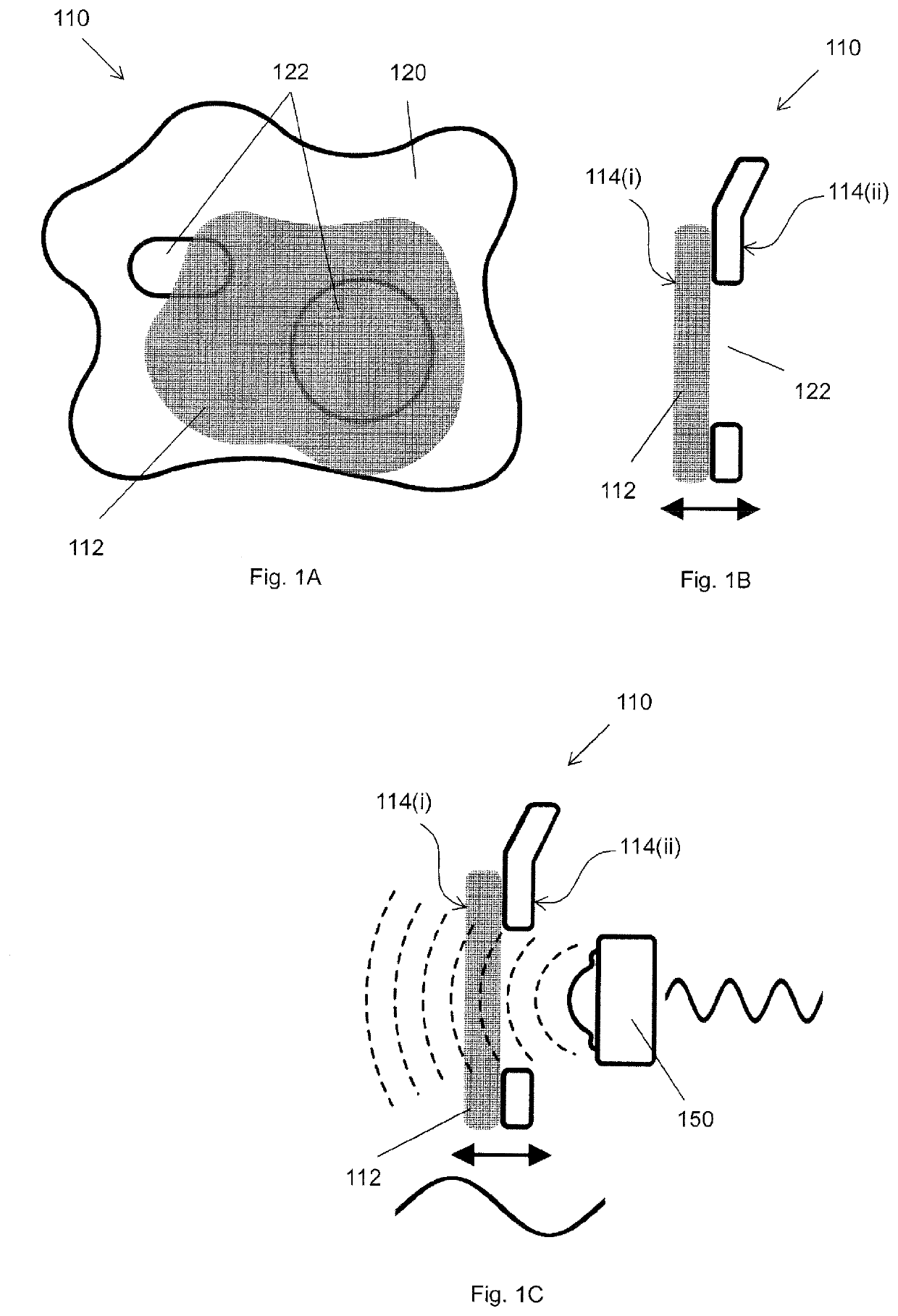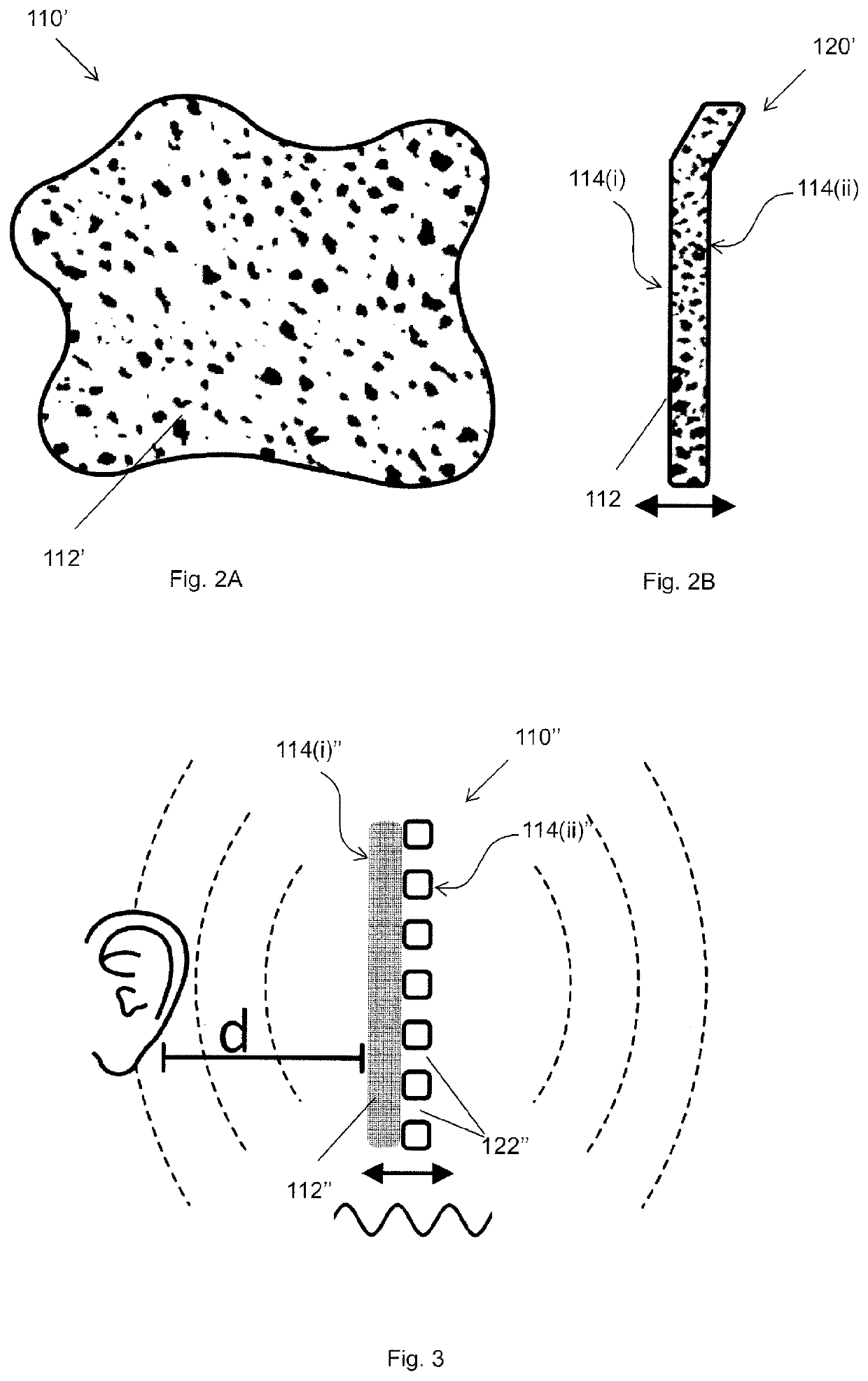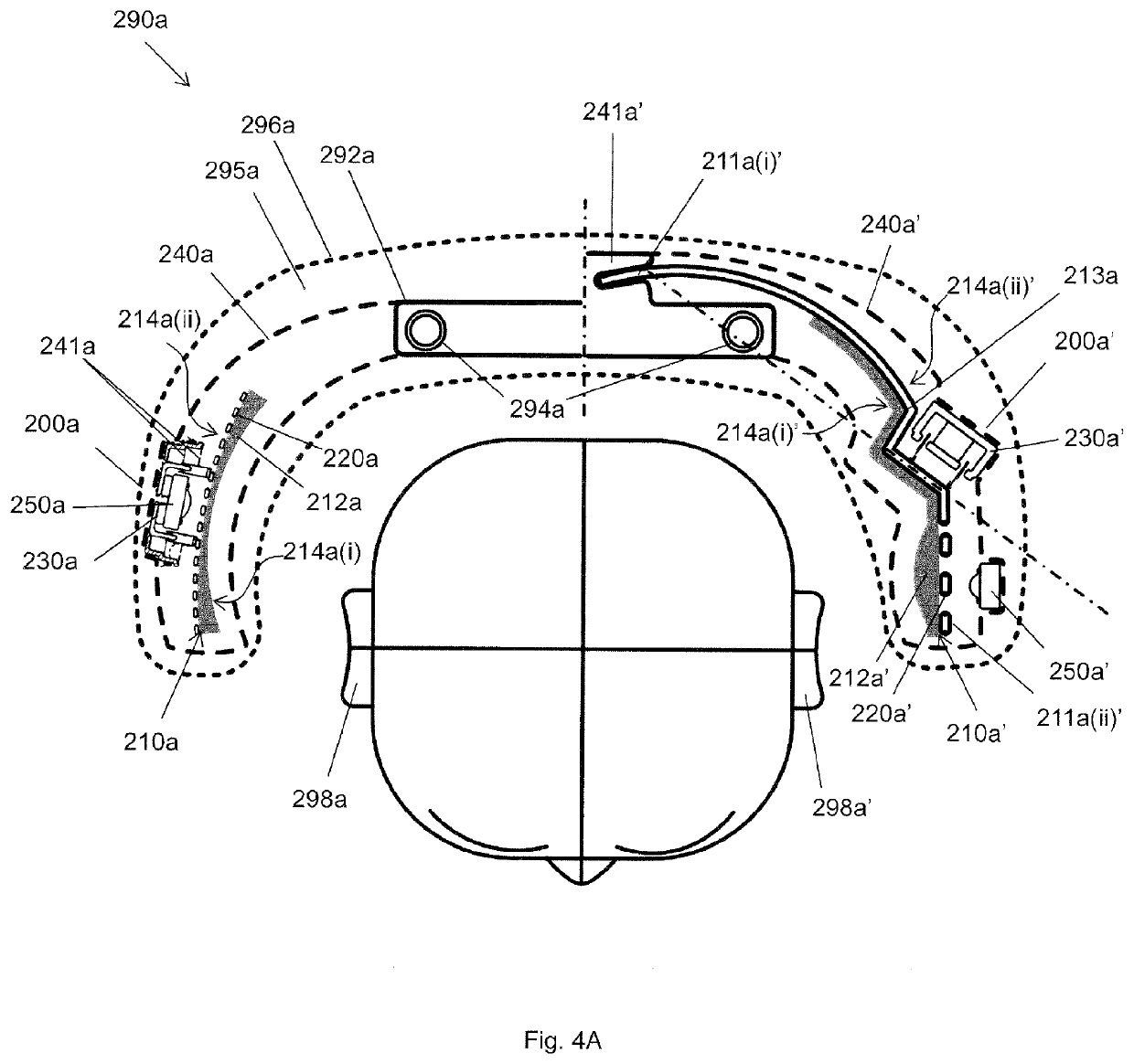Dipole loudspeaker for producing sound at bass frequencies
a bass frequency and loudspeaker technology, applied in the direction of transducer diaphragms, loudspeakers, electromechanical transducers, etc., can solve the problems of difficult to keep inside a room, difficult to package a mid-high frequency loudspeaker in combination with a bass frequency loudspeaker in a limited space, and a personal sound cocoon at mid and high frequencies
- Summary
- Abstract
- Description
- Claims
- Application Information
AI Technical Summary
Benefits of technology
Problems solved by technology
Method used
Image
Examples
experiment 1
[0170]FIG. 6A shows an experimental apparatus used for experiment 1.
[0171]The experimental apparatus included a diaphragm 410 that included includes a layer 412 of porous material mounted on a supporting structure 420.
[0172]The layer 412 of porous material was 10 mm Basotect open cell foam.
[0173]Basotect is a trademark from BASF and is an open cell melamine foam with a well-defined flow resistivity of approximately 10 kPa·s / m2. Therefore, it is often used as a reference open cell foam.
[0174]The supporting structure 420 was a 2 mm thick aluminium perforated plate having circular holes of diameter 5 mm arranged with a distance of 8 mm centre to centre (see inset circle). The aluminium plate was 32 cm in length, 20 cm wide, and was excited at a nodal line 25 cm from its base via a voice coil 437 mounted to a voice coil former 438 attached to the with a grounded magnet unit 432.
[0175]Note: the perforated plate used here is so open in structure, its specific airflow resistance that is cl...
experiment 2
[0184]FIG. 7 shows an experimental apparatus used for experiment 2.
[0185]The experimental apparatus used here is the same as for experiment 1, except that an additional supplementary mid-high frequency loudspeaker 450 was mounted to produce sound which propagates through a part of the layer 412 of porous material that airflow is permitted to flow through via the perforated plate 420.
[0186]In this experiment, the diaphragm 410 and supplementary loudspeaker 450 were used to play sound in the bass and mid-high frequencies (respectively), with a person locating their ear so that they could listen to sound produced by the mid-high frequency loudspeaker after this sound had propagated through the layer 412 of porous material (and the supporting structure 420) of the diaphragm 410.
[0187]The person listening to this sound reported that the sound was great, that the sound produced in the mid-high frequencies was perceived to be audibly non-affected by the diaphragm 410 and that this sound ac...
experiment 3
[0188]FIG. 8A shows an experimental apparatus used for experiment 3.
[0189]The experimental apparatus used here is the same as for experiment 1, except that a different perforated plate 420′ was used, as shown by the inset rectangle. Here the perforated plate 420′ used was 3 mm thick hardboard with irregularly spaced circular holes having a 55 mm diameter.
[0190]The plate was again 32 cm in length and 20 cm wide.
[0191]Note: the perforated plate 420′ used here allows airflow through the parts of the layer 412 of porous material located over and close to the holes, though there may be some parts of the layer 412 (e.g. which are located far away from the holes) through which airflow is not permitted by the perforated plate 420′.
[0192]The use of perforated plate 420′ was intended to demonstrate that a perforated plate with densely packed small holes are not required to obtain good results, and that good results can still be obtained with very large holes that provide little support and wh...
PUM
 Login to View More
Login to View More Abstract
Description
Claims
Application Information
 Login to View More
Login to View More - R&D
- Intellectual Property
- Life Sciences
- Materials
- Tech Scout
- Unparalleled Data Quality
- Higher Quality Content
- 60% Fewer Hallucinations
Browse by: Latest US Patents, China's latest patents, Technical Efficacy Thesaurus, Application Domain, Technology Topic, Popular Technical Reports.
© 2025 PatSnap. All rights reserved.Legal|Privacy policy|Modern Slavery Act Transparency Statement|Sitemap|About US| Contact US: help@patsnap.com



